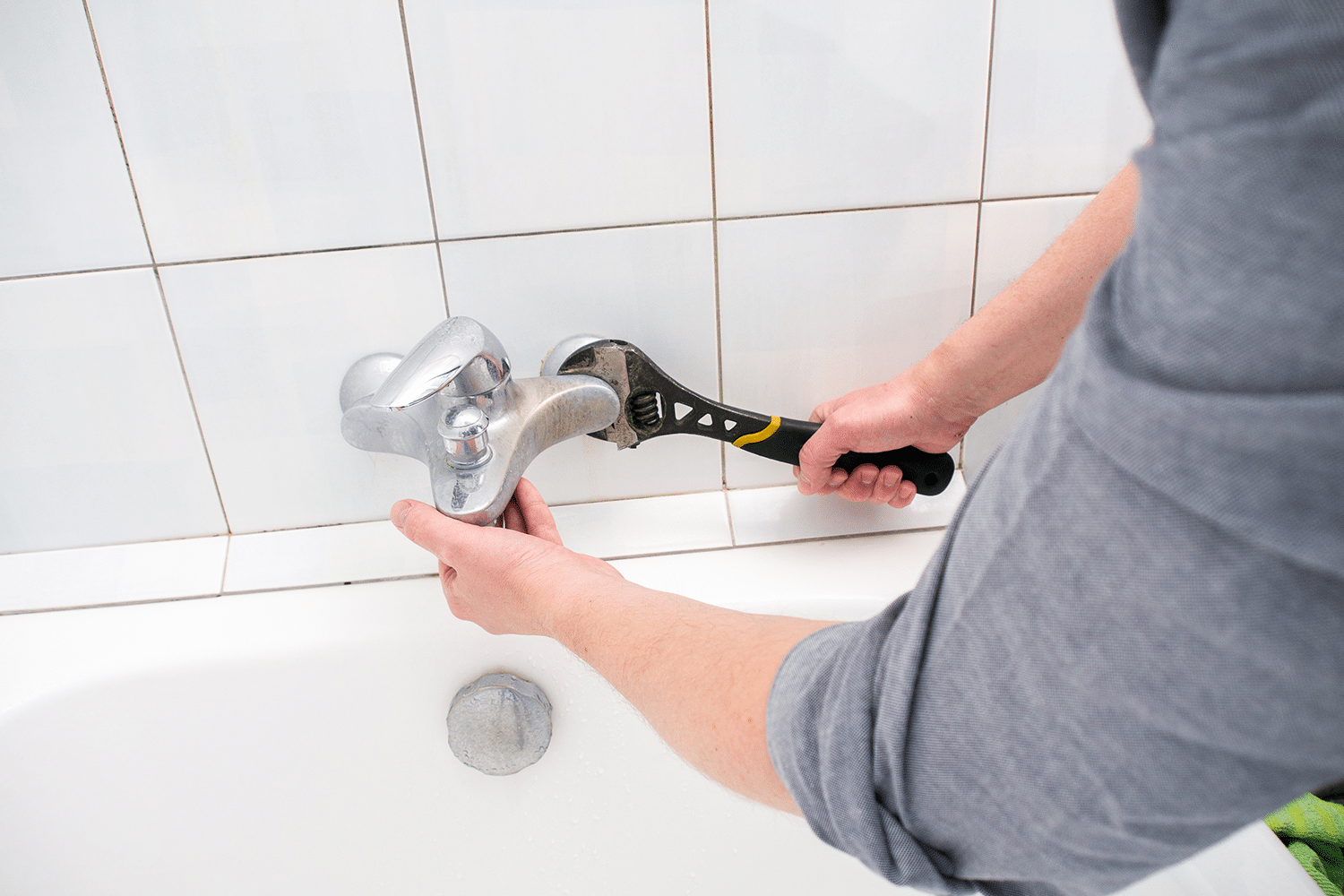Reasons Why It's Crucial to Repair a Leaking Faucet
Reasons Why It's Crucial to Repair a Leaking Faucet
Blog Article
We have discovered the article relating to Water Dripping from Faucet: Why and How to Fix down the page on the net and concluded it made sense to write about it with you on my blog.

Trickling taps could feel like a small hassle, but their effect goes beyond just the annoyance of the audio. From drainage to incurring unneeded monetary prices and health and wellness threats, neglecting a dripping tap can cause various repercussions. In this article, we'll explore why it's essential to resolve this common home concern promptly and successfully.
Wastage of Water
Environmental Effect
Leaking faucets contribute dramatically to water waste. According to the Environmental Protection Agency (EPA), a single tap trickling at one drip per secondly can squander greater than 3,000 gallons of water per year. This not only strains water sources however additionally impacts communities and wildlife based on them.
Step-by-Step Overview to Repairing a Dripping Tap
Devices Required
Before attempting to take care of a leaking tap, gather the required tools, including a flexible wrench, screwdrivers, replacement parts (such as washers or cartridges), and plumber's tape.
Typical Faucet Issues and Their Solutions
Recognize the type of faucet and the certain problem creating the drip. Usual problems include worn-out washers, rusty shutoff seats, or damaged O-rings. Describe manufacturer instructions or online tutorials for detailed advice on repairs.
Financial Prices
Raised Water Costs
Past the environmental impact, dripping taps can blow up water costs considerably. The collected waste over time converts into higher utility costs, which could have been stayed clear of with timely repairs.
Prospective Building Damage
Furthermore, extended dripping can lead to damage to components and surface areas bordering the faucet. Water build-up can trigger staining, corrosion, and even architectural concerns if left ignored, resulting in added fixing expenses.
Health Concerns
Mold And Mildew and Mildew Growth
The consistent existence of moisture from a trickling faucet develops a suitable environment for mold and mildew and mildew development. These fungi not just compromise interior air quality however also present health dangers, specifically for individuals with respiratory problems or allergies.
Waterborne Diseases
Stationary water in trickling taps can end up being a breeding ground for germs and other virus, enhancing the danger of waterborne diseases. Impurities such as Legionella bacteria prosper in stagnant water, possibly resulting in serious health problems when ingested or breathed in.
DIY vs. Professional Fixing
Pros and Cons of DIY Repair Service
While some may try to deal with a leaking faucet themselves, do it yourself fixings include their own collection of obstacles. Without appropriate knowledge and devices, do it yourself efforts can worsen the issue or lead to insufficient repair work, lengthening the problem.
Advantages of Working With an Expert Plumber
Employing an expert plumber makes certain that the underlying cause of the leaking tap is resolved effectively. Plumbing technicians have the proficiency and devices to identify and fix tap issues efficiently, saving time and minimizing the risk of further damage.
Environmental Responsibility
Individual Contribution to Preservation
Taking duty for fixing leaking taps aligns with more comprehensive initiatives toward water conservation and ecological sustainability. Every person's actions collectively make a considerable effect on protecting precious sources.
Sustainable Living Practices
By focusing on punctual repairs and taking on water-saving practices, people add to lasting living methods that profit both present and future generations.
Safety nets
Regular Maintenance Tips
To stop dripping faucets, execute regular upkeep such as cleansing aerators, checking for leaks, and changing damaged components quickly. Additionally, take into consideration setting up water-saving tools or upgrading to extra effective components.
Significance of Prompt Services
Dealing with trickling faucets as quickly as they're seen prevents more water wastefulness and potential damage, ultimately saving both water and money in the long run.
Impact on Building Worth
Assumption of Well-Maintained Property
Keeping a home in good condition, including addressing upkeep issues like dripping taps, improves its perceived worth and worth among potential customers or occupants.
Influence on Resale Worth
Features with well-kept plumbing fixtures, consisting of faucets, command greater resale worths in the real estate market. Resolving leaking taps can contribute to a favorable perception throughout home inspections and settlements.
Verdict
Dealing with a trickling faucet exceeds plain convenience; it's a vital step toward preserving water, reducing financial expenses, and guarding health and home. Whether with do it yourself repair work or expert aid, taking action to repair leaking taps is a little yet impactful means to advertise liable stewardship of sources and add to a much healthier, a lot more sustainable future.
How to Fix a Leaky Faucet: Step-by-Step Repair Guide
A leaky faucet may seem like a simple annoyance, but if it's not fixed promptly, that leak could cost hundreds to potentially thousands. From water damage to mold, mildew, and high water bills, even a tiny leak can be catastrophic if left unattended. Damage like this can even affect the overall value of your home, so it's important to take the right approach for leaky faucet repair. You may need the help of a plumber in some cases, but we've got a few tips you can try on how to fix a leaky faucet before calling the pros.
Four Faucet Types
When you're learning how to fix a leaky faucet, the first step is knowing what kind of faucet you're working with! There are four common types.
Cartridge Faucets
Cartridge faucets come in one- or two-handled varieties. In one-handled cartridge faucets, hot and cold water combines in a single cartridge. In the two-handled versions, hot and cold water are controlled separately and mixed in the faucet.
Ball Faucets
Ball faucets have a single lever you push up and down to adjust the pressure and rotate to change the temperature. A slotted metal ball controls the amount of water allowed into the spout.
Compression Washer Faucets
They're the oldest type of faucet, but they're still used in many homes — especially older ones. Compression faucets have two separate handles that, when turned, raise or lower the washer that seals a water valve. This valve stops water from flowing through the faucet when it is turned off.
Disc Faucets
Disc faucets rarely need to be repaired due to their maintenance-free design. The water flow is controlled by two discs — the upper one raises and lowers against a fixed lower disc, creating a watertight seal. If your disc faucet starts leaking, you may need to replace the seals or clean residue buildup from the inlets.
Fixing a Leaky Faucet
Step 1: Turn Off the Water
Whether you're learning how to fix a leaky bathtub faucet or how to fix a leaky kitchen faucet, always turn off the water supply to your working area when you're fixing a leak. The last thing you want is a flood added to your list of things to fix.
Look for the shutoff valves below your sink or around the tub and turn them clockwise to stop the water flow. If your faucet doesn't have shutoff valves, you may need to turn off the water for the whole house. Check to make sure it's off by turning the faucet on. If nothing comes out, you're ready to start the repair.
Step 2: Take Apart the Faucet
How you disassemble your faucet depends on the type of fixture you have. You can use a flathead screwdriver to remove the caps on top of the handle or handles for cartridge and compression faucets. Inside, you should see handle screws. Unscrew these with a screwdriver to remove the handle.
Disc- and ball-style faucets will typically have an inlet screw near the handle, and removing that will reveal the interior of the faucet.
Detach the Valve Stem
For cartridge- and compression-style faucets, you'll see the inner valve stem or cartridge once you remove the faucet handles. If you have a compression faucet, unscrew the brass valve stem. If you have a cartridge faucet, pull out the cartridge. If your cartridge has been in place for a while, it may require some tools or extra force to remove it due to mineral deposits.
Examine and Replace Parts
Once you've removed the parts, check them out to confirm what needs to be replaced. You may see corroded rubber washers, O-rings, stems, or cartridges. On a ball-style faucet, check the seats and springs for damage.
If you need to repair a leaky disc faucet, check the inlet and seals on the lower disc.
Once you determine what parts must be replaced, visit your local hardware store. Bring the damaged parts with you to ensure you can purchase the correct components to replace them.
Clean Valves and Faucet Cavity
If you've removed a stem or cartridge, you may notice mineral buildup in the faucet's threads. Use white vinegar to clean the valve seat by soaking it for a few minutes, then scrub it away with a soft toothbrush and rinse with warm water. You can also clean the interior of the faucet in the same way.
Reassemble the Faucet
Once your faucet is cleaned and the required parts have been replaced, it's time to reassemble it. Put the pieces back together and slowly turn the water supply back on. Doing this slowly is crucial because too much initial water pressure can damage the new hardware you've just installed.
https://homewarranty.firstam.com/blog/how-to-fix-leaky-faucet

I'm just very fascinated with and I really hope you liked the entire page. For those who enjoyed our blog posting plz don't forget to share it. Thank you for your time spent reading it.
Report this page